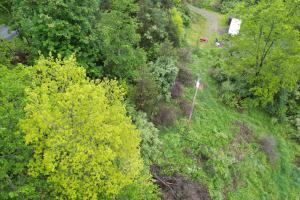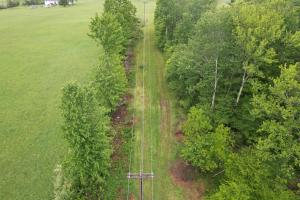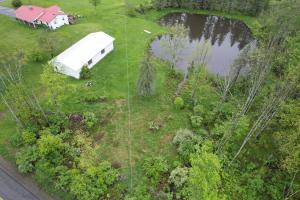Claverack's primary goal is to provide our members with safe and reliable electric service, but outages are impossible to avoid. Electrical outages that affect our members occur for a variety of reasons such as power supply issues to our substations, animal contact, vehicle accidents, and storms. But trees are the leading cause of outages on our system — often dead or dying trees located outside our maintained rights of way.
We are committed to improving our system reliability. Over the last few years, Claverack has made significant progress in our efforts to mitigate the effects of the dying trees near our power lines. Please continue reading the information below, which details our progress and future plans. Helpful information for our members is also provided.
IMPORTANT: If you come upon a downed line or a tree that is directly in contact with one of our power lines, stay as far away as possible (Claverack recommends at least 50 feet) and secure the area. You must contact us immediately by calling 1-800-326-9799. NO ONE — except Claverack REC linemen — should ever attempt to remove a tree from a line, even if you suspect the line may not be energized.
BEFORE and AFTER drone photos show some of the areas where trimming was completed.
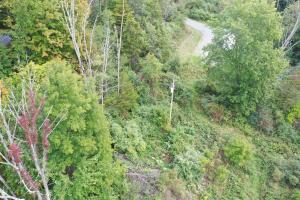
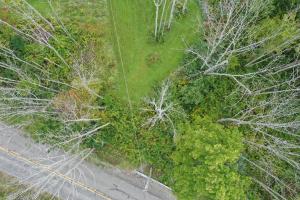

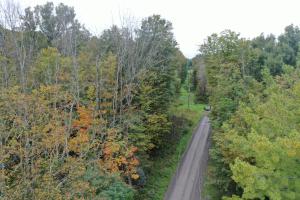
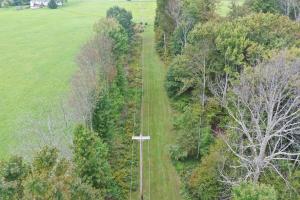

The Cooperative maintains two programs for right of way and tree issues. Our routine maintenance group works on approximately 536 miles of line a year. During this process, we prune branches, remove hazardous trees, and clear floor vegetation for easier access by our line workers. Our Hot-Spot Program responds to concerns reported by line workers and members regarding conditions that occur outside of the routine maintenance schedule.
To assist with our continuing efforts, we are implementing the use of a satellite-based vegetation management system. Through a Pennsylvania GRG grant, this system will provide us with data for the entire system for the next five years to identify areas that need tree-related work. We plan to use this data to drive a more targeted approach to our maintenance efforts, helping to make our programs more efficient.
Please note: it is the member's responsibility to trim trees located near the service line - the wires from the transformer pole that feed power to your building or pole. (See the graphic below.) If a tree located in this area is of concern to you, please contact a certified/licensed tree removal contractor. If the contractor feels that the tree has the potential of falling on the line during the removal process, please contact our office to schedule a time for our linemen to disconnect the wire so that removal efforts can be as safe as possible.

The AARC rider was a temporary charge on members’ electric bills from Jan. 1, 2023, through Dec. 31, 2024. The $5 monthly charge was utilized to enhance our vegetation management efforts to remove danger trees located outside of our maintained rights of way, particularly dead and dying ash trees impacted by the emerald ash borer.
Nick Berger, Senior Director of Engineering & Operations, summarized the success of the AARC Program in the December issue of Penn Lines. Click here for details.
The graph below shows the cumulative impact of the temporary AARC rider over the course of the two years it was in effect.
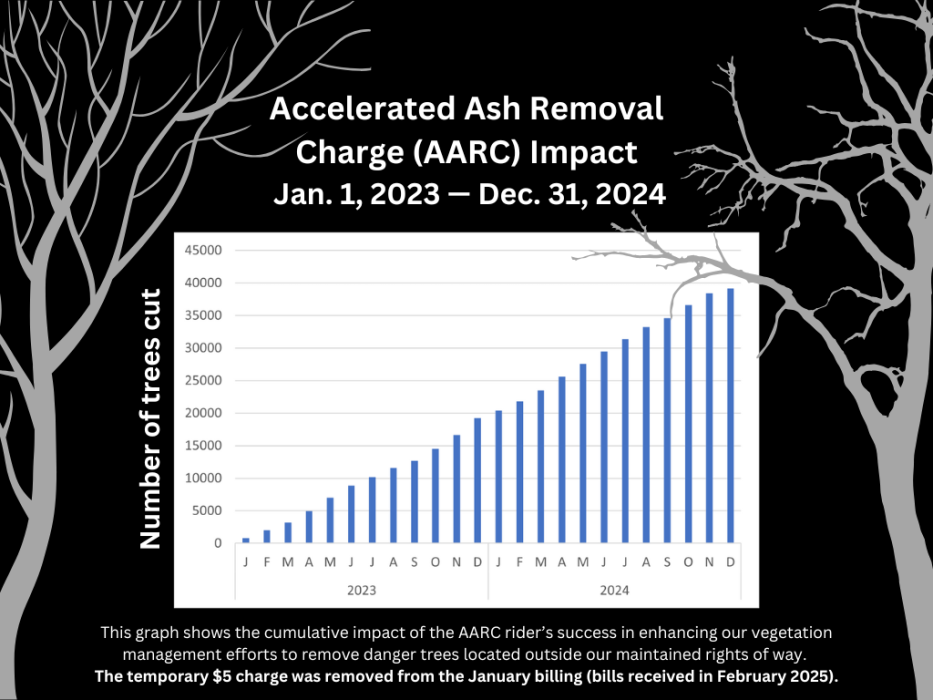
Some signs of our presence will be left behind after the maintenance work.
The equipment we use often leaves marks on the ground and the vegetation. We make every effort to tread lightly and avoid leaving ruts, but sometimes a site that seems accessible will turn out to be soft. If there are excessive disturbances like deep ruts that cause drainage issues or other material that disrupts the normal use of your property, we will work with you to resolve those issues.
With routine right-of-way pruning and trimming, small branches may be chipped, but anything that is too large to be run through a chipper will be left on-site.
Due to the timeframe of our accelerated vegetation management efforts and the location of the work, crews will make every effort to keep the area neat and clean, but they are tasked with strictly the removal aspect. Any ash tree (or tree deemed dangerous) will be left where it was dropped and no material will be hauled away from these areas.
When planting trees, please look up. Power lines and vegetation do not mix. So if your tree has the potential to contact the lines, it will need to be trimmed or removed at some point. Our crews need to have clear access to the lines and poles at all times. Trees under and in power lines can make their work difficult and dangerous and cause further delays during outage situations. If trees are marked for removal or trimming, it is because they present a liability to us to provide safe and reliable energy.
Please click here for detailed information regarding the use of herbicides on Claverack rights of way.
IMPORTANT: If you come upon a downed line or a tree that is directly in contact with one of our power lines, stay as far away as possible (Claverack recommends at least 50 feet) and secure the area. It is important that you contact us immediately by calling 1-800-326-9799. NO ONE — except Claverack REC linemen — should ever attempt to remove a tree from a line, even if you suspect the line may not be energized.
If you see a tree that has the potential of coming in contact with or falling onto an electric line, please call our office. Our Right of Way Program Manager will note the location. A strategic approach will be used to determine when a crew will be sent to that area to remove the tree. Due to the sheer volume of danger trees located across our service area, we may not be able to respond quickly, so we ask for members' patience and understanding.
When tree crews arrive in your area to perform either routine or danger tree removal efforts, please allow crews to access the areas of your property.
Nothing should be placed directly under or within 20 feet of either side of a Claverack line. This includes: trees, shrubs, vegetation, structures or other obstructions.
Click here for a quick video to help you with your next tree planting project.
And here are just a few graphics to help, too!
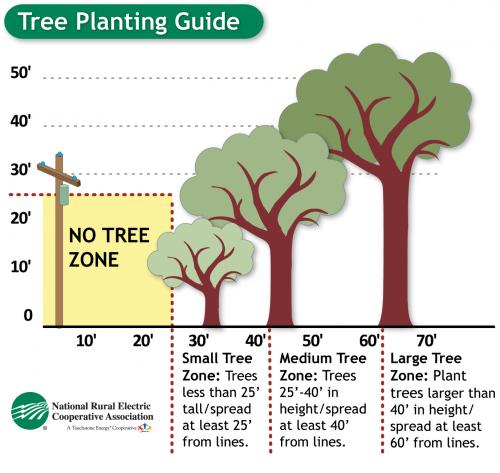

Click here to see where crews are currently working.

